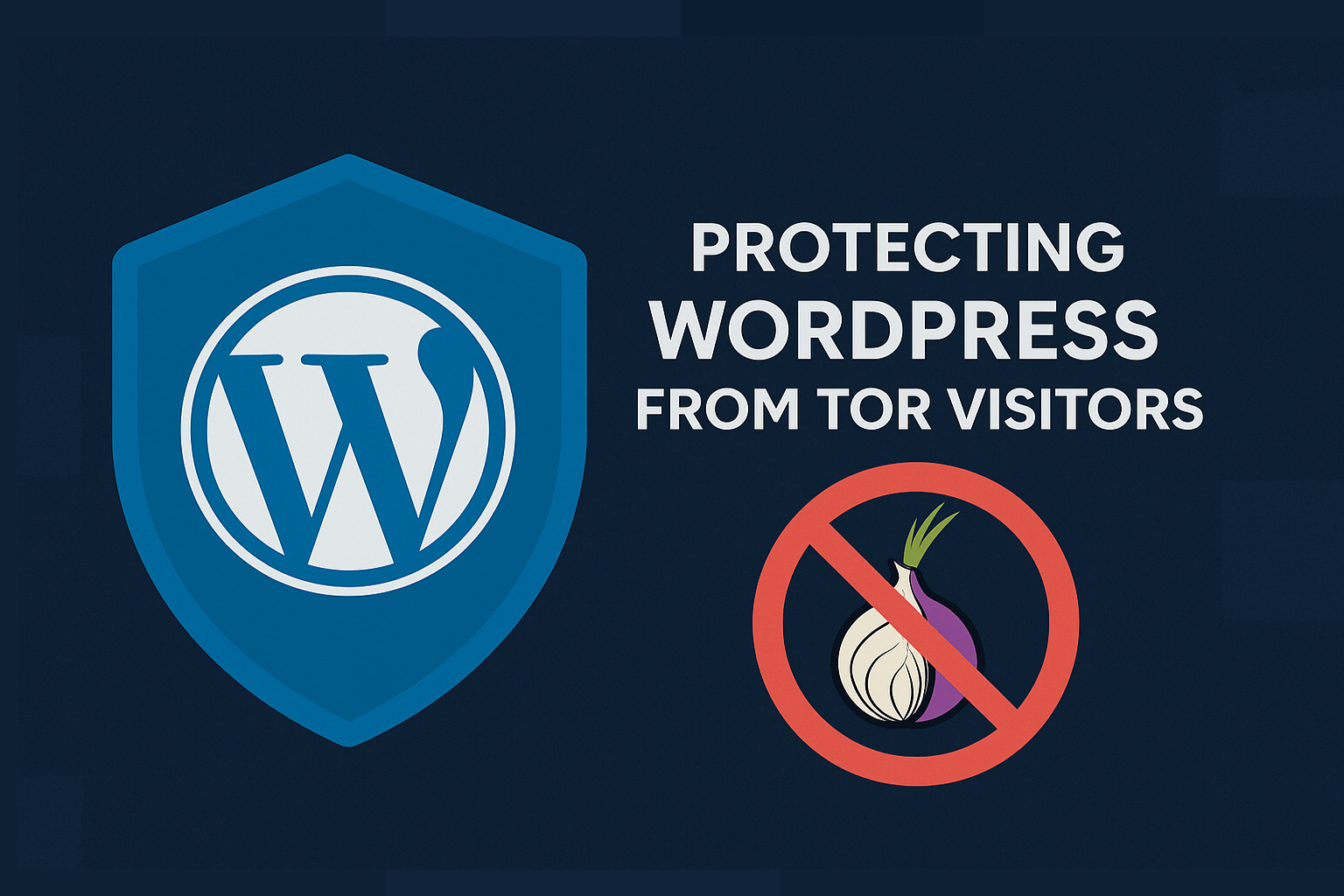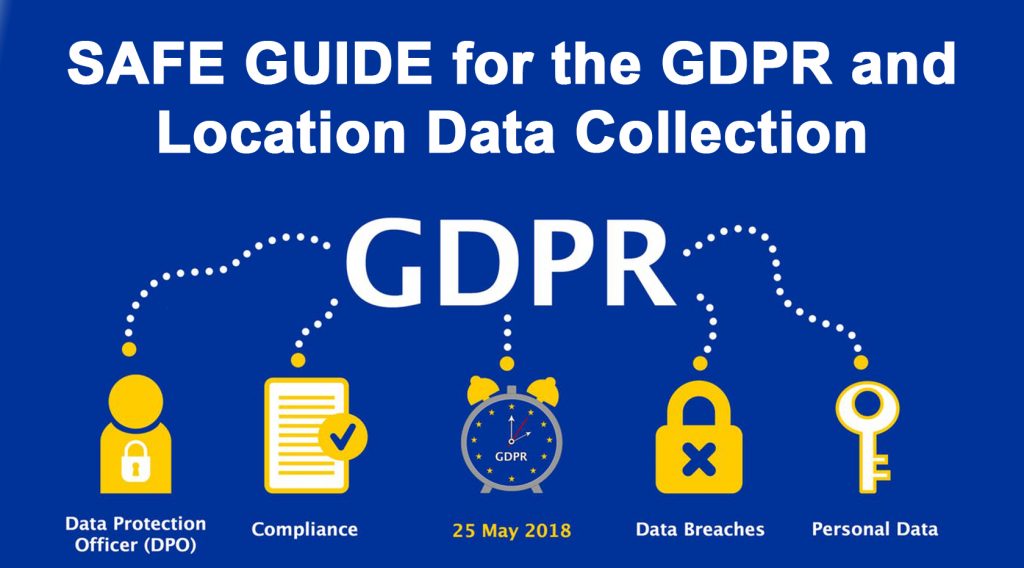There’s a thin line between privacy and abuse, and the TOR network sits right on it.
For some people, TOR is a lifeline – a tool that keeps them anonymous in countries where the internet is censored or monitored. For others, it’s a perfect cover for brute-force attacks, spam bots, and automated scanners. If you’ve ever checked your WordPress logs and seen dozens of strange requests from IPs scattered across the world, chances are at least part of that traffic came through TOR.
Most administrators don’t think about it until it becomes a problem. A sudden spike in login attempts, comment spam flooding your forms, or API endpoints being hit thousands of times per minute – and every IP trace leads to “exit nodes” that mean nothing to you. You can’t trace them. You can’t block one and hope it stops. Tomorrow, it’ll be a new IP. That’s the nature of TOR: every door is a different one, and they all lead to the same invisible hallway.
This article isn’t about fearmongering or “banning TOR completely.” It’s about control – understanding how this network works, how to detect it, and how to decide what kind of access you want to allow. Whether you’re building a secure membership site, a WooCommerce store, or just a blog tired of spam, knowing how to handle TOR traffic properly is part of responsible site management.
What TOR Actually Is
TOR (The Onion Router) is a decentralized network designed to hide the source of online traffic. Each request is wrapped in several layers of encryption and travels through multiple relays before reaching the destination server. The only IP your website sees is the one from the final “exit node.” The person behind that request could be anywhere in the world – and you’ll never know where exactly.
The network was built to protect privacy and free expression, and in that role it does an important job. But because of its anonymity, it’s also frequently used for automated attacks, scrapers, and bots that hide behind the same mechanism that protects activists and journalists.
In other words, TOR itself isn’t the problem – lack of control is.
Why TOR Traffic Matters for WordPress
WordPress sites are frequent targets because they’re predictable: wp-login.php, admin-ajax.php, and XML-RPC endpoints all exist in known locations. Attackers use TOR to mask where they come from and make automated attacks harder to track. Common symptoms include:
- Sudden spikes in failed login attempts.
- Comment spam despite using anti-spam plugins.
- Heavy server load from automated bots or scrapers.
- Random API or AJAX requests hitting hundreds of times per minute.
- Strange referral data or missing headers in logs.
It doesn’t matter if your site is small or large – TOR traffic doesn’t discriminate. And once it starts, blocking one IP won’t help, because the attacker will simply reappear through another exit node within minutes.
How WP Geo Controller Helps
Instead of chasing IPs, the smarter solution is to handle TOR traffic through a detection and control system. WP Geo Controller includes a built-in TOR Network Control feature that lets you define exactly how your website behaves when a visitor connects through TOR.
Inside the plugin’s settings, you can choose between three core modes:
- Allow TOR Visitors – The site remains open for everyone, but you can still detect and log TOR connections for monitoring.
- Restrict TOR Visitors – Visitors connecting through the TOR network can view public content, but cannot register, comment, or submit forms.
- Block TOR Access – All traffic from TOR exit nodes is blocked automatically, and you can display a custom message or redirect users elsewhere.
This flexibility means you can adapt the level of protection to the nature of your website. For a blog or informational site, you might allow TOR access. For a store or membership system, you might choose to block or limit it.
Detecting TOR Visitors
WP Geo Controller uses a verified list of known TOR exit nodes combined with server-level lookups to identify when a visitor is using the TOR network. Detection happens in real time and can also be cached for better performance. When caching is enabled, results are stored temporarily to reduce repeated checks and speed up responses for returning users.
Once detection is active, you can use shortcodes to display different content depending on whether the visitor is on TOR or not. For example:
[is_tor default="You are browsing from a normal network."]You are using the TOR network.[/is_tor]
This shortcode will show the message inside it only to TOR visitors. For everyone else, the “default” text will appear instead. You can apply this logic anywhere – posts, pages, widgets, or custom templates.
Similarly, you can reverse the logic to show content only to non-TOR users:
[is_not_tor default="You are using the TOR network."]You are browsing from a normal network.[/is_not_tor]
These shortcodes are simple but powerful. They allow conditional display without writing PHP code, giving you full control over how TOR users experience your site.
Balancing Privacy and Security
It’s important to remember that not every TOR user is malicious. Many people use it because they simply don’t trust public Wi-Fi networks or live in countries where privacy isn’t guaranteed. Blocking everyone can send the wrong message, especially if your website promotes freedom, education, or journalism.
That’s why WP Geo Controller doesn’t force one policy on everyone. Instead, it lets you set your own boundaries. You can block TOR traffic entirely or just limit what those visitors can do. You can even apply rules only to specific pages – for instance, blocking TOR access to wp-login.php or checkout pages but leaving blog articles visible.
Integrating With Other WordPress Features
WP Geo Controller works at the plugin level but also integrates smoothly with WordPress hooks and other security plugins. You can use the detected TOR status to apply conditional logic inside your theme or plugin code.
Example (conceptually):
<?php
if ( method_exists('CFGP_U', 'api') && CFGP_U::api('is_tor') ) {
// Block form submissions or display a warning.
echo '<div class="tor-warning">TOR connections are restricted on this site.</div>';
} else {
// Normal access
get_template_part('partials/regular-access');
}
?>
With this, you can extend the detection logic to any part of your site – from login forms to checkout processes.
Combining TOR Detection With Geolocation
One of the biggest advantages of WP Geo Controller is that it doesn’t stop at TOR detection. You can combine it with geolocation rules to create smart, region-specific policies. For example, you could block TOR traffic only from certain countries or continents while allowing others. Or you could use TOR detection to trigger custom notices based on visitor location.
This combination gives you full flexibility – TOR detection for anonymity control, and geolocation for regional targeting or compliance.
Real-World Use Cases
- WooCommerce Stores: Prevent anonymous orders or fake signups by blocking checkout access through TOR.
- Membership Sites: Require verified users to log in from a non-TOR connection for added accountability.
- Contact Forms: Reduce spam by displaying forms only to non-TOR visitors using shortcodes.
- Admin Access: Deny TOR connections to wp-admin completely to protect against brute-force attempts.
In each of these cases, WP Geo Controller automates the logic so you don’t have to maintain IP lists or write scripts. You simply set your preference once, and the plugin handles the rest.
Example Setup in WP Geo Controller
To enable TOR protection, go to:
Dashboard → WP Geo Controller → Settings → TOR Network Control
There you can select one of the control modes:
- Unrestricted Access – TOR visitors are allowed and tracked.
- Restricted Access – TOR visitors can browse but not interact.
- Blocked Access – TOR visitors see your custom message or are redirected.
Optionally, you can enable caching to improve performance. The plugin will automatically store TOR status results temporarily, avoiding repeated lookups and ensuring faster page loads.
From there, you can also define a custom message for blocked TOR visitors. For example:
[is_tor default=""]Access through the TOR network is restricted for security reasons. Please connect using a standard network connection.[/is_tor]
This message will appear automatically to blocked users, and it can be styled or translated like any other WordPress content.
Performance and Security Considerations
TOR detection doesn’t have to slow your website down. WP Geo Controller’s caching mechanism ensures that detection results are reused for multiple requests from the same IP. The detection process runs asynchronously when possible, so it doesn’t delay rendering your pages.
Security-wise, the plugin doesn’t share or expose sensitive visitor data. TOR detection is done server-side, and only anonymized information (status flags) is used within WordPress. You maintain full compliance with privacy laws and data protection standards.
Best Practices for Responsible TOR Management
- Always inform users when blocking access. A simple notice builds transparency and avoids confusion.
- Monitor your logs. Even if you block TOR, keep track of connection attempts for security analysis.
- Use caching strategically. Avoid repeated lookups that could impact performance.
- Combine with rate limiting. WP Geo Controller works perfectly alongside WAFs or plugins like Wordfence or Fail2Ban.
- Adjust your policy based on site type. What’s acceptable for a blog may not be safe for an e-commerce store.
Conclusion
TOR traffic isn’t inherently bad, but it needs boundaries. Anonymity should never mean unchecked access. With WP Geo Controller, you have a straightforward way to detect, manage, and control TOR visitors without breaking your site or overcomplicating your setup.
Instead of treating TOR as a threat, treat it as a signal – one that helps you decide how to protect your content and users. With proper configuration, your WordPress site can stay open to the world while remaining secure, stable, and abuse-free.
For detailed configuration steps, visit the official documentation: TOR Network Control – WP Geo Controller.




